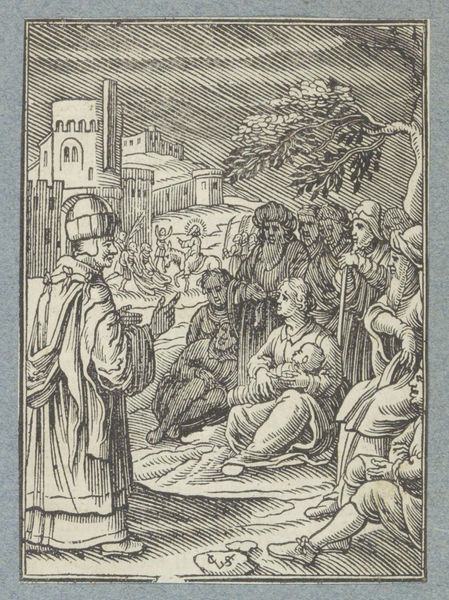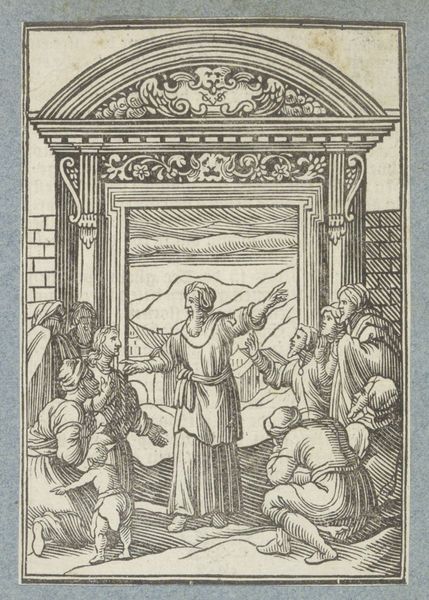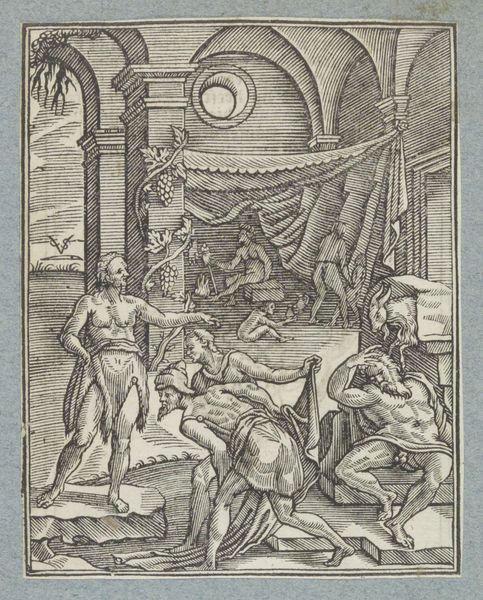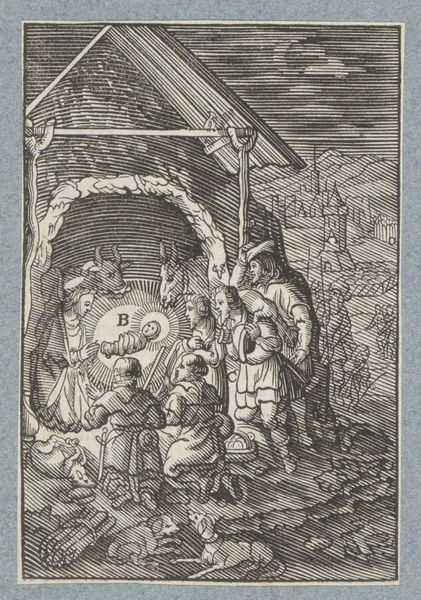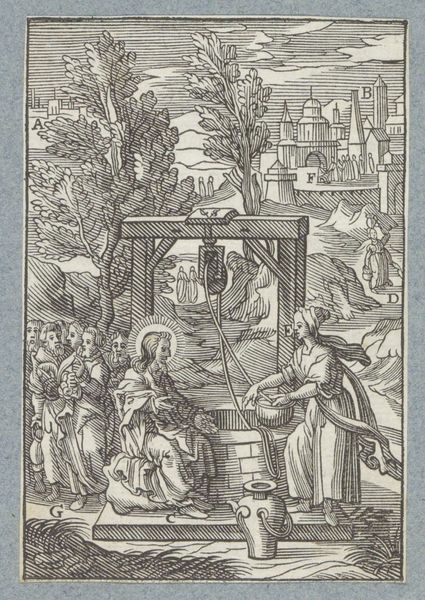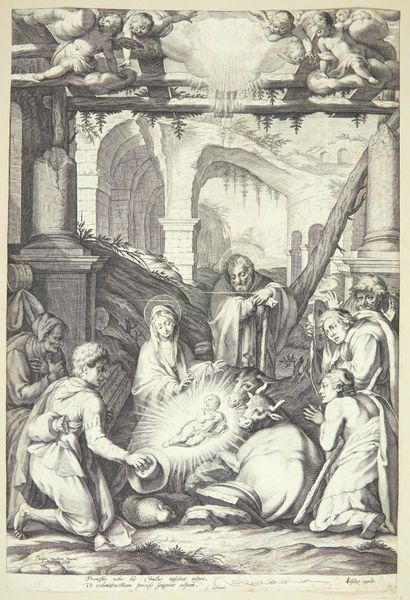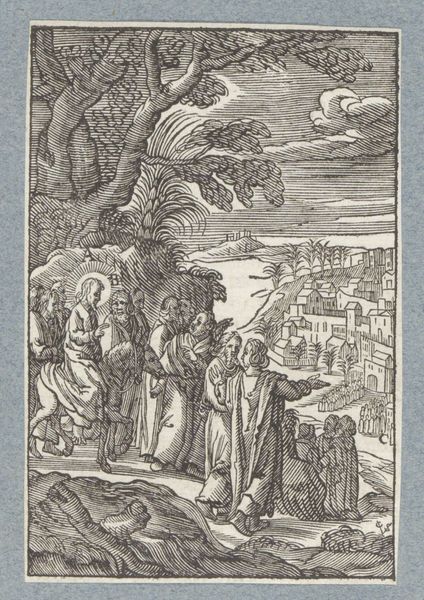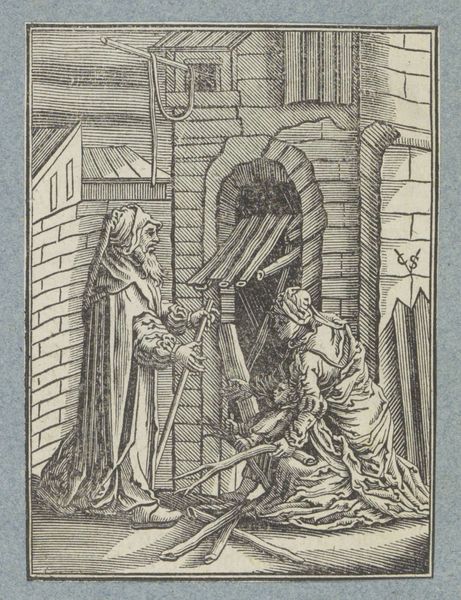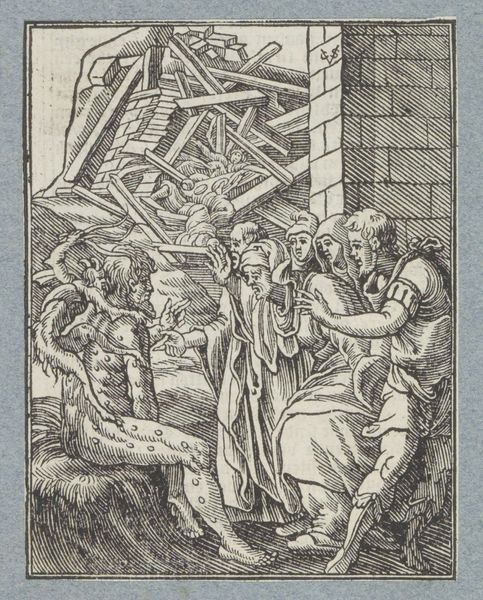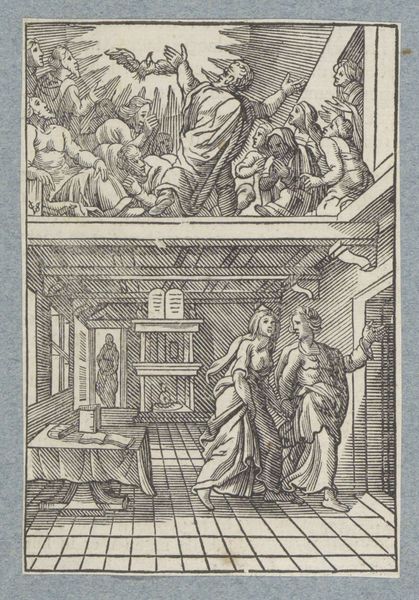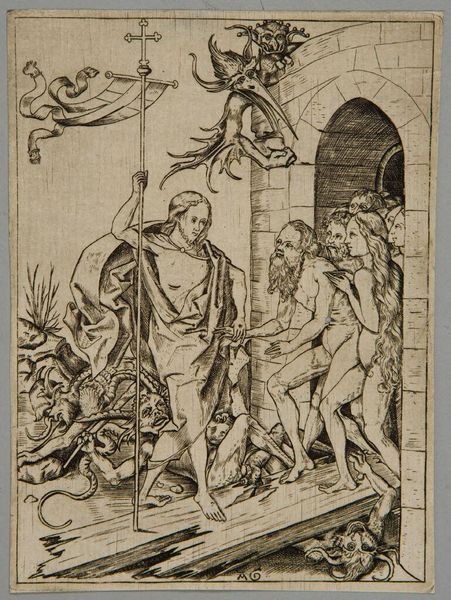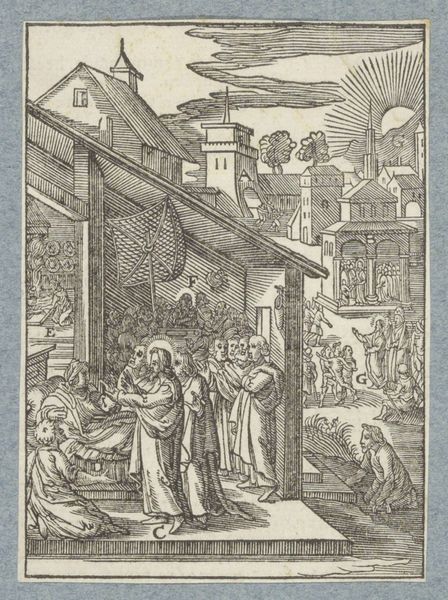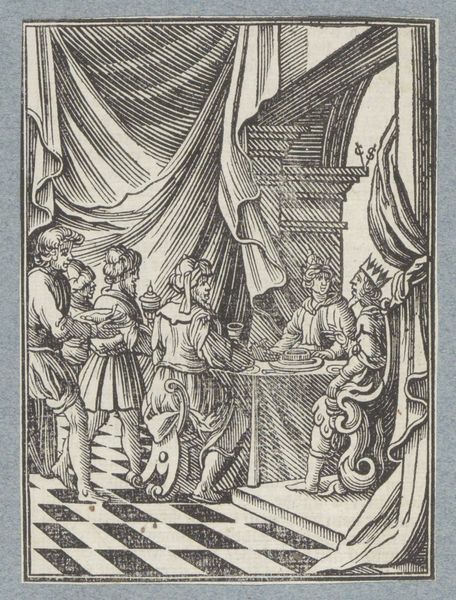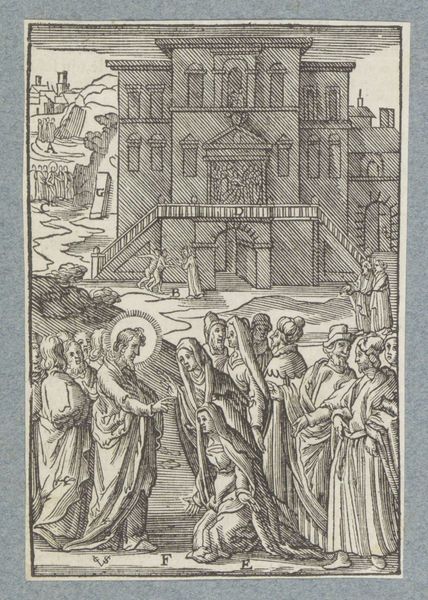
drawing, print, ink, engraving
#
drawing
#
narrative-art
#
baroque
# print
#
figuration
#
ink
#
line
#
engraving
Dimensions: height 111 mm, width 79 mm
Copyright: Rijks Museum: Open Domain
Curator: Here we have Christoffel van Sichem the Younger’s “Prophecy of Joel,” made around 1645 or 1646. It's currently part of the Rijksmuseum’s collection and created using engraving on laid paper with ink. Editor: Woah, there's an ethereal feeling when you see it. I feel it’s all about contrasts. There’s deathly stillness, like the babe lying on the sarcophagus, opposed to the divine power hovering above the masses. Curator: Absolutely, that interplay between the corporeal and the spiritual is at the heart of baroque art. Sichem meticulously crafts depth and drama using varied line weights to convey both tangible presence and spiritual energy. He skillfully presents this rather complicated story with many figures using minimal, but very precise lines. Editor: Do you think the cross-hatching almost lends the work a slightly tragic or dramatic overtone? It looks theatrical to me! I think it suits the whole prophet Joel narrative. The linear detail almost seems to cage everyone into their places. Curator: Indeed. Baroque artists embraced emotion, movement, and symbolism to provoke reaction. Notice, that it is named “Prophecy of Joel”. In fact, Joel's prophecy is about national repentance after a devastating plague of locusts, a call for introspection, which feels perfectly encapsulated. This print comes across as very somber and almost frightening. Editor: Looking at it I'm taken by how much tiny detail and narrative power is crammed into a small scene. I also like that the image feels very self-contained. Is it fair to say that it draws you in, like a memory viewed in isolation? Curator: You're right on point! It makes me reflect on the role that the image of prophecy itself plays within society. Whether in the 17th century, or now. Editor: And with a shudder, perhaps we will both sleep on it! I love the depth it has managed to provide with its narrative— it's all food for thought!
Comments
No comments
Be the first to comment and join the conversation on the ultimate creative platform.
